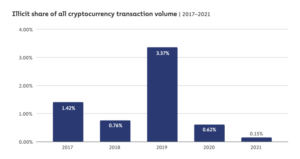Dubbed Project Hamilton, exploratory research between the Federal Reserve of Boston and the Massachusetts Institute of Technology’s (MIT) released the first round of results in modeling a digital dollar.
The results of the initial technological research into a central bank digital currency (CBDC) were published accompanied by an open-source code in github for contributions.
The two digital currency designs
The disclosed research describes a “theoretical high-performance and resilient transaction processor for a CBDC”–developed using ‘OpenCBDC’–an open-source research software.
In this initial phase, the project focused on building and testing platforms that would “give policymakers substantial flexibility in the potential creation of a CBDC.”
Project Hamilton focuses on technological experimentation and research–separate from the Federal Reserve’s Board’s evaluation of a CBDC.
As per report, the team created a core processing engine for a hypothetical CBDC and further explored it in two distinct architectures.
The disclosed research evaluated their speed, throughput, and fault tolerance.
The key difference between the two designs is that one, unlike the other, keeps a complete record of transactions in the order they were processed.
The team noted:
“This highlights initial tradeoffs we found between scalability, privacy, and auditability,”
Processing 1.7 million transactions per second
The model which doesn’t involve keeping an ordered transaction history surfaced as superior in terms of performance–demonstrating a “throughput of 1.7 million transactions per second (TPS) with 99% of transactions durably completing in under a second, and the majority of transactions completing in under half a second.”
“Despite using ideas from blockchain technology, we found that a distributed ledger operating under the jurisdiction of different actors was not needed to achieve our goals,” read the report, noting that a distributed ledger diverges from the project’s trust assumptions–as the platform would be administered by a central actor.
“We found that even when run under the control of a single actor, a distributed ledger architecture has downsides,” the project added, stating performance bottlenecks, and requiring the central transaction processor to maintain transaction history as some of the cons.
The team is now pursuing another phase of the research, which will, amongst other focus on alternative technical designs.
In this second phase, Project Hamilton will also analyze additional functionality related to a hypothetical digital currency.
CryptoSlate Newsletter
Featuring a summary of the most important daily stories in the world of crypto, DeFi, NFTs and more.
Get an edge on the cryptoasset market
Access more crypto insights and context in every article as a paid member of CryptoSlate Edge.
On-chain analysis
Price snapshots
More context
- 7
- Additional
- administered
- All
- Another
- architecture
- article
- Bank
- blockchain
- blockchain technology
- boston
- Box
- Building
- CBDC
- Central Bank
- central bank digital currency
- code
- crypto
- Currency
- DeFi
- designs
- different
- digital
- digital currency
- digital dollar
- distributed
- Distributed Ledger
- Doesn’t
- Dollar
- Fed
- Federal
- federal reserve
- First
- Flexibility
- Focus
- focused
- found
- GitHub
- Goals
- history
- HTTPS
- important
- insights
- IT
- join
- keeping
- Key
- Ledger
- Majority
- massachusetts
- million
- MIT
- model
- modeling
- more
- most
- needed
- NFTs
- open-source code
- operating
- order
- Other
- performance
- phase
- platform
- Platforms
- price
- privacy
- project
- record
- release
- report
- research
- Results
- round
- Run
- Scalability
- Software
- speed
- Stories
- substantial
- superior
- Technical
- Technology
- Testing
- the world
- tolerance
- top
- transaction
- Transactions
- Trust
- world
- would












